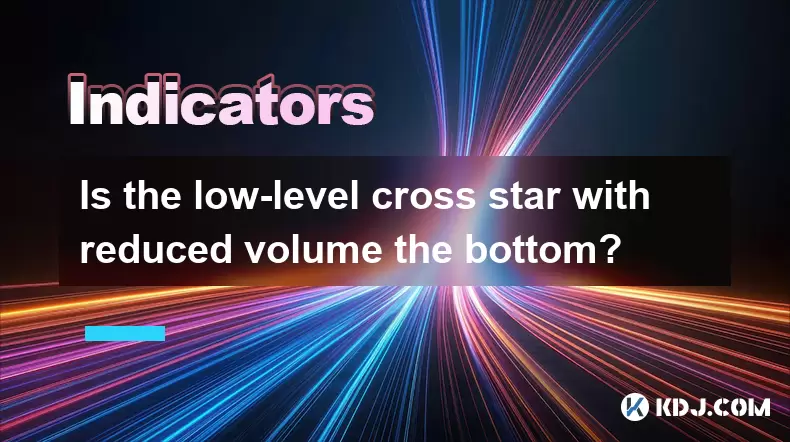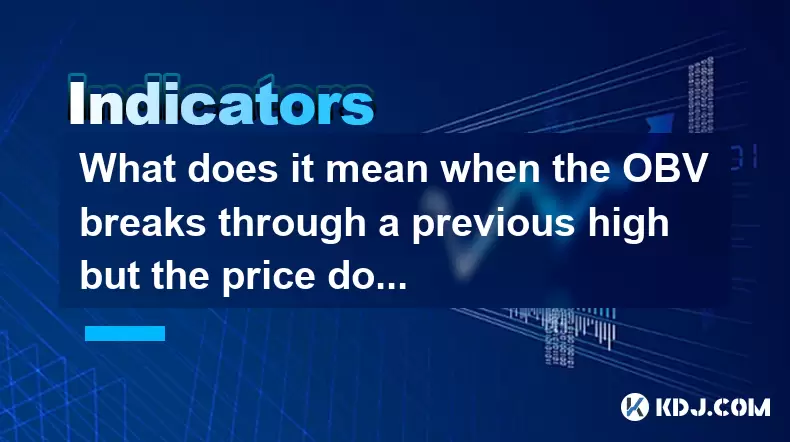-
 Bitcoin
Bitcoin $116700
0.24% -
 Ethereum
Ethereum $3973
4.34% -
 XRP
XRP $3.283
7.68% -
 Tether USDt
Tether USDt $1.000
0.01% -
 BNB
BNB $789.8
2.27% -
 Solana
Solana $176.2
3.31% -
 USDC
USDC $0.9999
0.00% -
 Dogecoin
Dogecoin $0.2238
5.14% -
 TRON
TRON $0.3389
-0.51% -
 Cardano
Cardano $0.7907
4.03% -
 Stellar
Stellar $0.4527
10.02% -
 Hyperliquid
Hyperliquid $41.07
4.27% -
 Sui
Sui $3.794
1.77% -
 Chainlink
Chainlink $19.49
10.40% -
 Bitcoin Cash
Bitcoin Cash $580.9
0.74% -
 Hedera
Hedera $0.2617
4.32% -
 Avalanche
Avalanche $23.41
3.67% -
 Ethena USDe
Ethena USDe $1.001
-0.03% -
 Litecoin
Litecoin $122.4
1.38% -
 Toncoin
Toncoin $3.364
1.49% -
 UNUS SED LEO
UNUS SED LEO $8.988
0.37% -
 Shiba Inu
Shiba Inu $0.00001295
2.82% -
 Uniswap
Uniswap $10.62
5.75% -
 Polkadot
Polkadot $3.922
4.46% -
 Dai
Dai $1.000
0.01% -
 Bitget Token
Bitget Token $4.494
2.15% -
 Monero
Monero $268.0
-1.30% -
 Cronos
Cronos $0.1523
3.68% -
 Pepe
Pepe $0.00001127
4.43% -
 Aave
Aave $285.4
4.85%
Is the low-level cross star with reduced volume the bottom?
A low-level cross star with reduced volume can signal a market bottom in crypto, but traders should confirm with other indicators to avoid false signals.
Jun 01, 2025 at 08:14 pm

Understanding the Low-Level Cross Star with Reduced Volume
In the world of cryptocurrency trading, technical analysis plays a crucial role in predicting market movements. One pattern that traders often look for is the low-level cross star with reduced volume. This pattern can be a potential indicator of a market bottom, but understanding its implications requires a deep dive into its characteristics and the context in which it appears.
Characteristics of a Low-Level Cross Star
A low-level cross star is a candlestick pattern that appears on a chart when the opening and closing prices are very close to each other, forming a small body, while the shadows (or wicks) extend significantly on both sides. This pattern is typically seen at the lower end of a downtrend. When this pattern is accompanied by reduced volume, it suggests that the selling pressure is diminishing, which can be a sign that the market might be reaching a bottom.
The Role of Volume in Identifying a Bottom
Volume is a critical factor in confirming whether a pattern like the low-level cross star indicates a bottom. Reduced volume during the formation of a cross star suggests that fewer traders are participating in the market, and the bearish momentum is waning. This can be interpreted as a sign that the sellers are exhausted, and a reversal might be imminent. However, it's essential to consider other indicators and the overall market context before concluding that a bottom has been reached.
Contextual Analysis of the Low-Level Cross Star
The effectiveness of a low-level cross star with reduced volume as a bottom indicator depends heavily on the context. For instance, if this pattern appears after a prolonged downtrend and near a significant support level, it increases the likelihood of a bottom. Additionally, if other technical indicators, such as the Relative Strength Index (RSI) or Moving Average Convergence Divergence (MACD), show signs of oversold conditions, it further supports the case for a potential bottom.
Case Studies of Low-Level Cross Stars in Cryptocurrency Markets
To better understand how a low-level cross star with reduced volume can indicate a bottom, let's look at a few case studies from the cryptocurrency markets:
Bitcoin (BTC) in March 2020: During the early stages of the global economic downturn, Bitcoin experienced a significant drop. On March 12, 2020, a low-level cross star formed on the daily chart with notably reduced volume. This pattern, combined with the RSI indicating oversold conditions, suggested that a bottom might have been reached. In the following weeks, Bitcoin began to recover, confirming the bottom.
Ethereum (ETH) in November 2018: Ethereum saw a prolonged bear market in 2018. On November 20, 2018, a low-level cross star appeared with reduced volume at the lower end of the downtrend. This pattern, along with other indicators showing exhaustion in selling pressure, hinted at a potential bottom. Ethereum started to show signs of recovery shortly after, supporting the idea that the pattern had indeed marked a bottom.
Practical Steps to Identify and Trade the Low-Level Cross Star
Identifying and trading based on a low-level cross star with reduced volume requires careful analysis and a disciplined approach. Here are the steps to follow:
- Monitor the Downtrend: Keep an eye on the market during a downtrend, looking for signs of exhaustion in the bearish momentum.
- Identify the Cross Star: Look for a candlestick with a small body and long shadows at the lower end of the trend.
- Check the Volume: Ensure that the volume is significantly reduced compared to the previous days or weeks.
- Analyze Other Indicators: Use tools like RSI, MACD, and support levels to confirm the potential bottom.
- Set Entry and Exit Points: Once the pattern is confirmed, set clear entry and exit points for your trades. Consider using stop-loss orders to manage risk.
- Monitor the Market: After entering a trade, continue to monitor the market for any signs of reversal or continuation of the trend.
Risks and Considerations When Trading Based on This Pattern
While the low-level cross star with reduced volume can be a useful indicator, it's not foolproof. There are several risks and considerations to keep in mind:
- False Signals: The pattern can sometimes result in false signals, leading to losses if not properly validated with other indicators.
- Market Volatility: Cryptocurrency markets are known for their high volatility, which can quickly invalidate the pattern.
- Confirmation Bias: Traders might see what they want to see, especially during prolonged downtrends, leading to misinterpretation of the pattern.
Frequently Asked Questions
Q: Can the low-level cross star with reduced volume be used in other financial markets?
A: Yes, the low-level cross star with reduced volume can be applied to other financial markets, such as stocks and forex. However, the effectiveness may vary depending on the specific characteristics of each market.
Q: How long should traders wait for confirmation after spotting the low-level cross star?
A: Traders should typically wait for at least one to two subsequent candlesticks to confirm the pattern. Additional confirmation from other technical indicators can also help validate the bottom.
Q: Are there any specific time frames that are more suitable for identifying this pattern?
A: The low-level cross star with reduced volume can be identified on various time frames, but it is often more reliable on daily or weekly charts, as these provide a broader view of market trends and volume changes.
Q: Can this pattern be used in conjunction with other reversal patterns?
A: Yes, combining the low-level cross star with other reversal patterns, such as the hammer or doji, can provide stronger signals of a potential bottom. However, traders should always use multiple indicators to increase the reliability of their analysis.
Disclaimer:info@kdj.com
The information provided is not trading advice. kdj.com does not assume any responsibility for any investments made based on the information provided in this article. Cryptocurrencies are highly volatile and it is highly recommended that you invest with caution after thorough research!
If you believe that the content used on this website infringes your copyright, please contact us immediately (info@kdj.com) and we will delete it promptly.
- Solana, Litecoin, Remittix: Unpacking the Latest Crypto Trends
- 2025-08-09 09:30:12
- Bitcoin Cash, AIXA Miner, and Daily Income: A New Yorker's Take
- 2025-08-09 09:30:12
- Trump, Crypto, and Public Companies: A New York Minute on Digital Finance
- 2025-08-09 09:50:12
- Trump's 401(k) Crypto Revolution: Is Your Retirement Ready?
- 2025-08-09 09:50:12
- Coinbase, DEX Trading, and Self-Custody: A New Era for Crypto?
- 2025-08-09 09:55:11
- Trump Family, Crypto Ventures, and Stablecoins: A New York Minute on USD1
- 2025-08-09 09:55:11
Related knowledge

What does it mean when the Williams' oscillator repeatedly hits bottoms but fails to rebound?
Aug 09,2025 at 09:28am
Understanding the Williams %R OscillatorThe Williams %R oscillator, developed by Larry Williams, is a momentum indicator used in technical analysis to...

When the J line in the KDJ indicator suddenly turns downward after being continuously overbought, does it indicate a top?
Aug 09,2025 at 06:35am
Understanding the KDJ Indicator and Its ComponentsThe KDJ indicator is a momentum oscillator widely used in cryptocurrency technical analysis to ident...

What does it mean when the TRIX indicator suddenly diverges downward after a long period of convergence?
Aug 09,2025 at 12:56am
Understanding the TRIX Indicator in Cryptocurrency TradingThe TRIX indicator, or Triple Exponential Average, is a momentum oscillator used in technica...

What does it mean when the OBV breaks through a previous high but the price doesn't reach a new high?
Aug 09,2025 at 07:57am
Understanding the On-Balance Volume (OBV) IndicatorThe On-Balance Volume (OBV) is a technical analysis indicator that uses volume flow to predict chan...

Why is the rise limited after a MACD bottoming divergence?
Aug 09,2025 at 12:07am
Understanding MACD Bottoming Divergence in Cryptocurrency TradingThe MACD (Moving Average Convergence Divergence) is a widely used technical indicator...

What does it mean when the OBV continues to rise but the price is trading sideways?
Aug 08,2025 at 10:35pm
Understanding On-Balance Volume (OBV)On-Balance Volume (OBV) is a technical indicator that uses volume flow to predict changes in stock or cryptocurre...

What does it mean when the Williams' oscillator repeatedly hits bottoms but fails to rebound?
Aug 09,2025 at 09:28am
Understanding the Williams %R OscillatorThe Williams %R oscillator, developed by Larry Williams, is a momentum indicator used in technical analysis to...

When the J line in the KDJ indicator suddenly turns downward after being continuously overbought, does it indicate a top?
Aug 09,2025 at 06:35am
Understanding the KDJ Indicator and Its ComponentsThe KDJ indicator is a momentum oscillator widely used in cryptocurrency technical analysis to ident...

What does it mean when the TRIX indicator suddenly diverges downward after a long period of convergence?
Aug 09,2025 at 12:56am
Understanding the TRIX Indicator in Cryptocurrency TradingThe TRIX indicator, or Triple Exponential Average, is a momentum oscillator used in technica...

What does it mean when the OBV breaks through a previous high but the price doesn't reach a new high?
Aug 09,2025 at 07:57am
Understanding the On-Balance Volume (OBV) IndicatorThe On-Balance Volume (OBV) is a technical analysis indicator that uses volume flow to predict chan...

Why is the rise limited after a MACD bottoming divergence?
Aug 09,2025 at 12:07am
Understanding MACD Bottoming Divergence in Cryptocurrency TradingThe MACD (Moving Average Convergence Divergence) is a widely used technical indicator...

What does it mean when the OBV continues to rise but the price is trading sideways?
Aug 08,2025 at 10:35pm
Understanding On-Balance Volume (OBV)On-Balance Volume (OBV) is a technical indicator that uses volume flow to predict changes in stock or cryptocurre...
See all articles

























































































